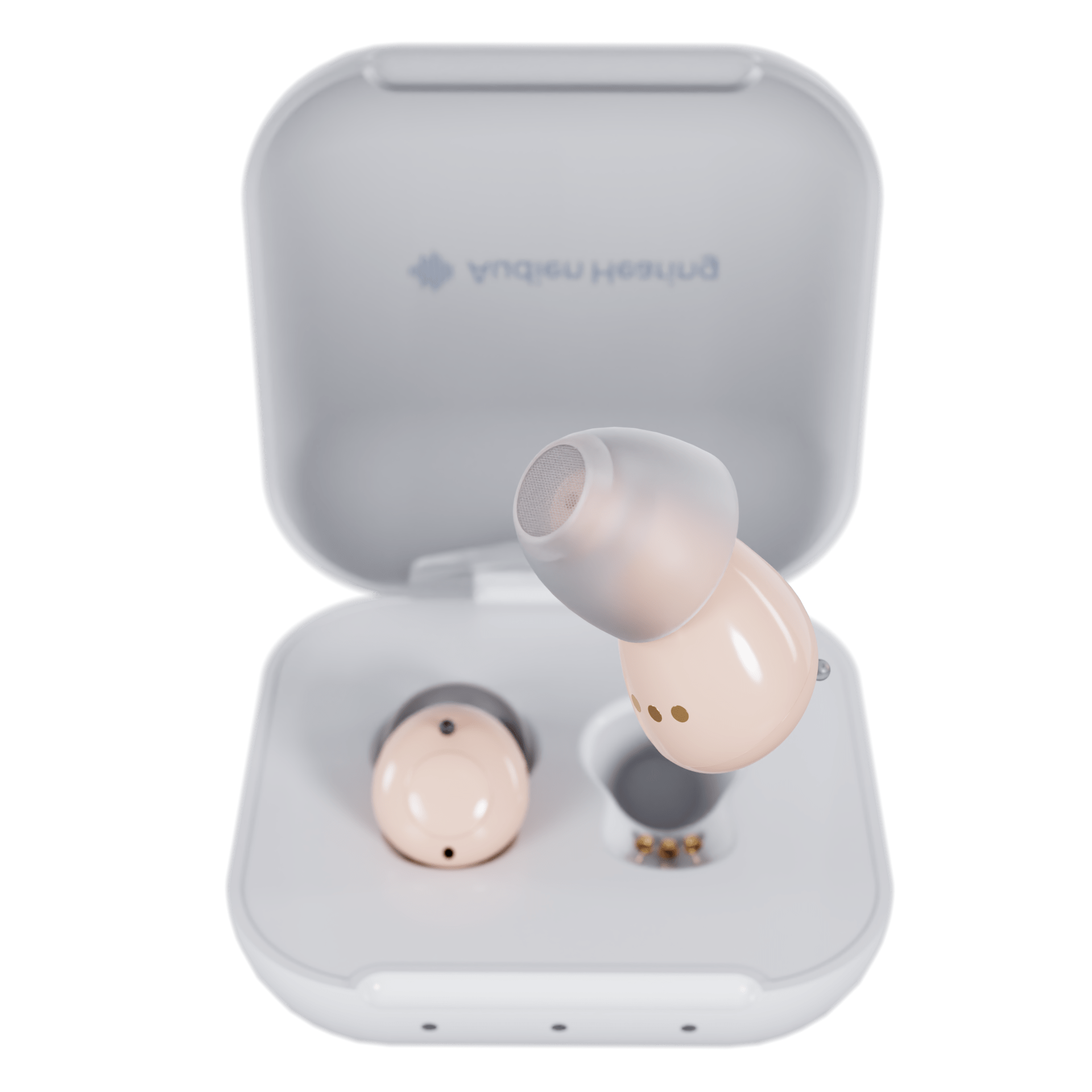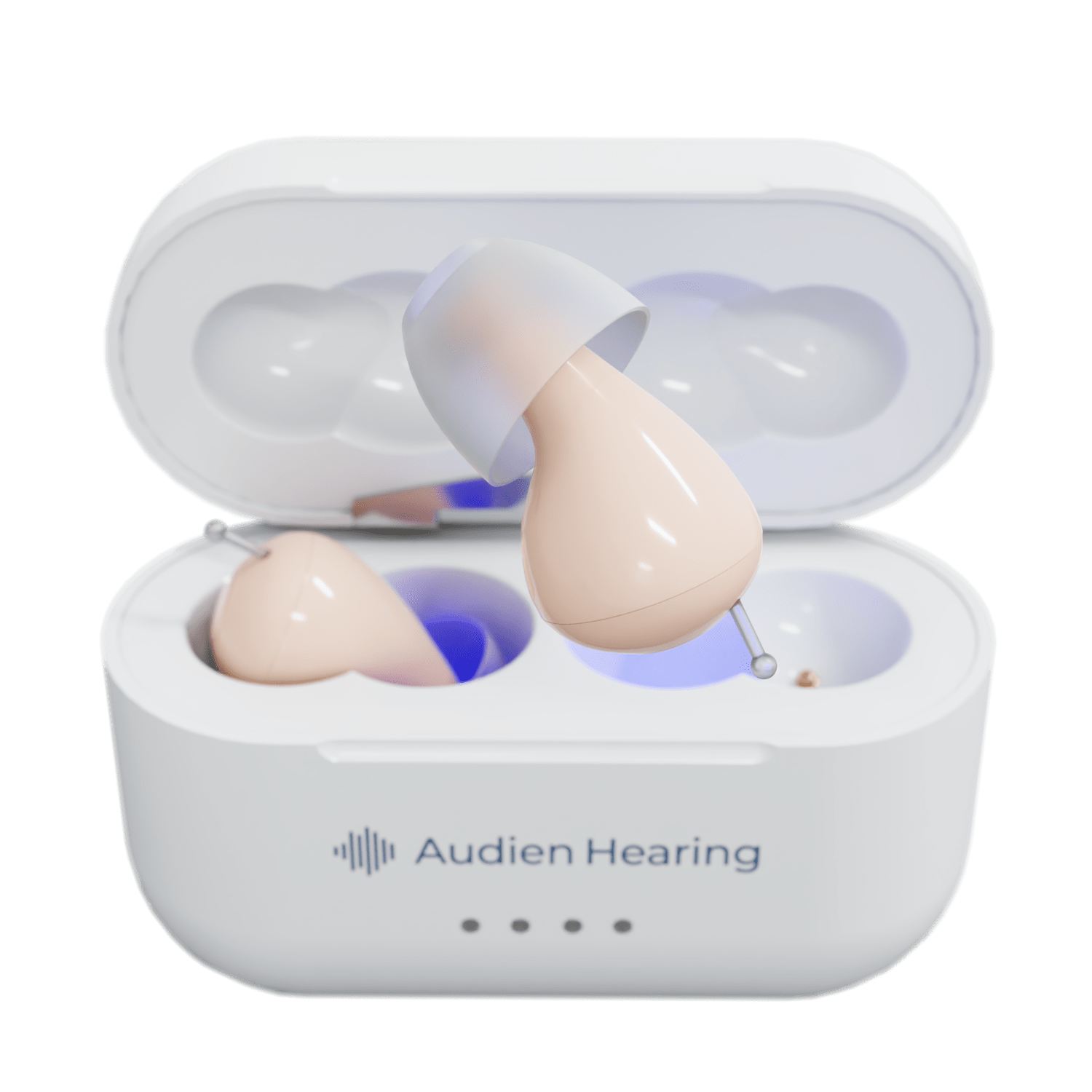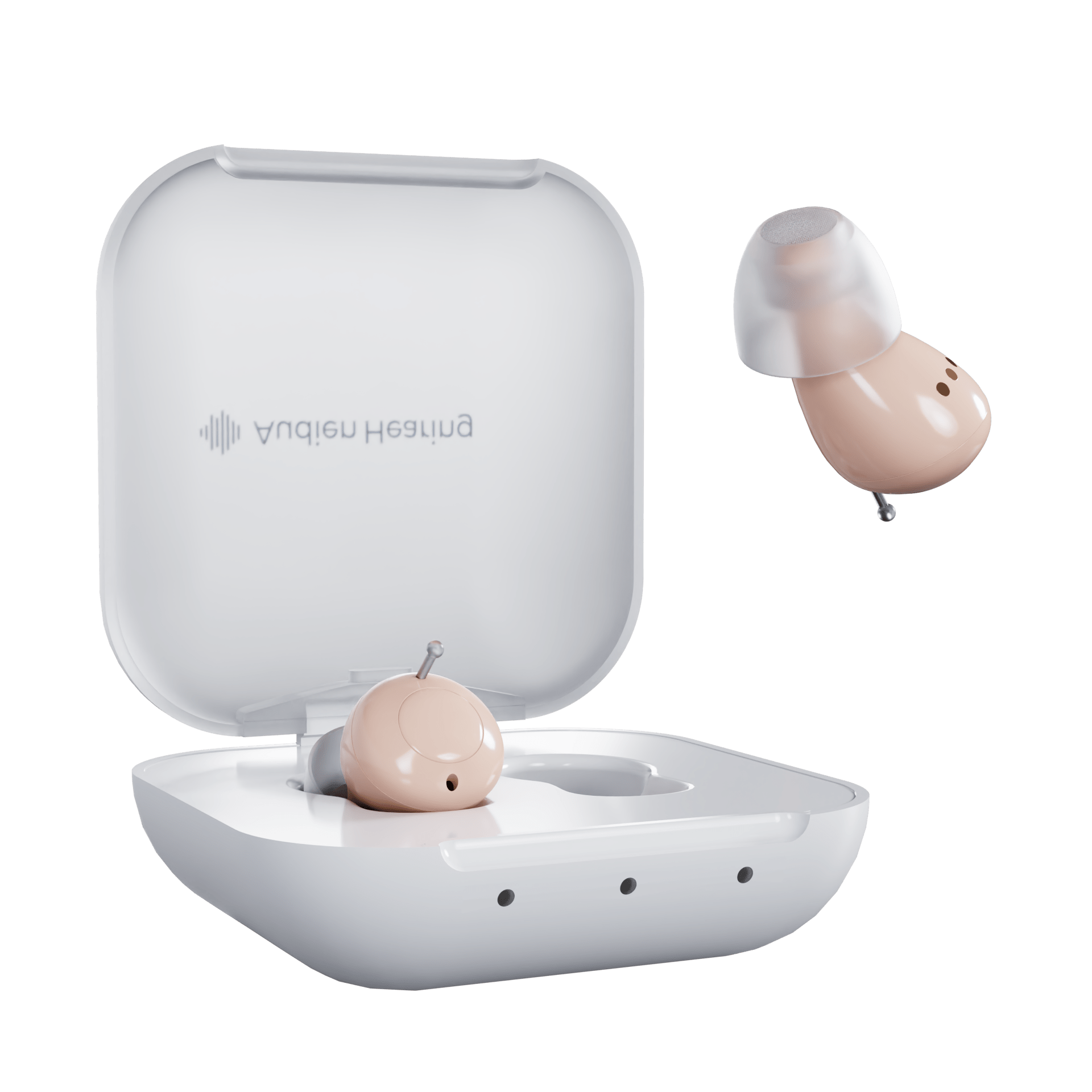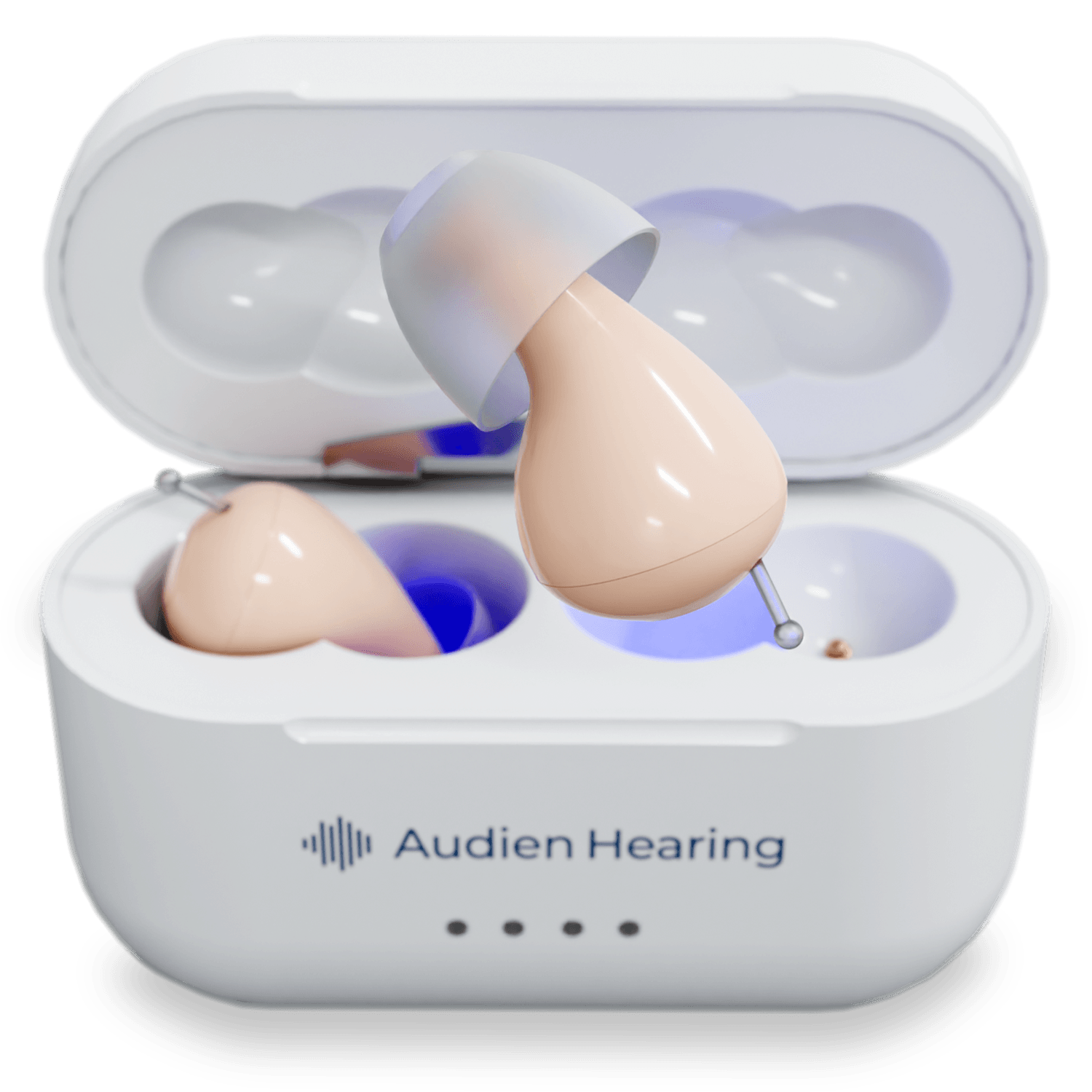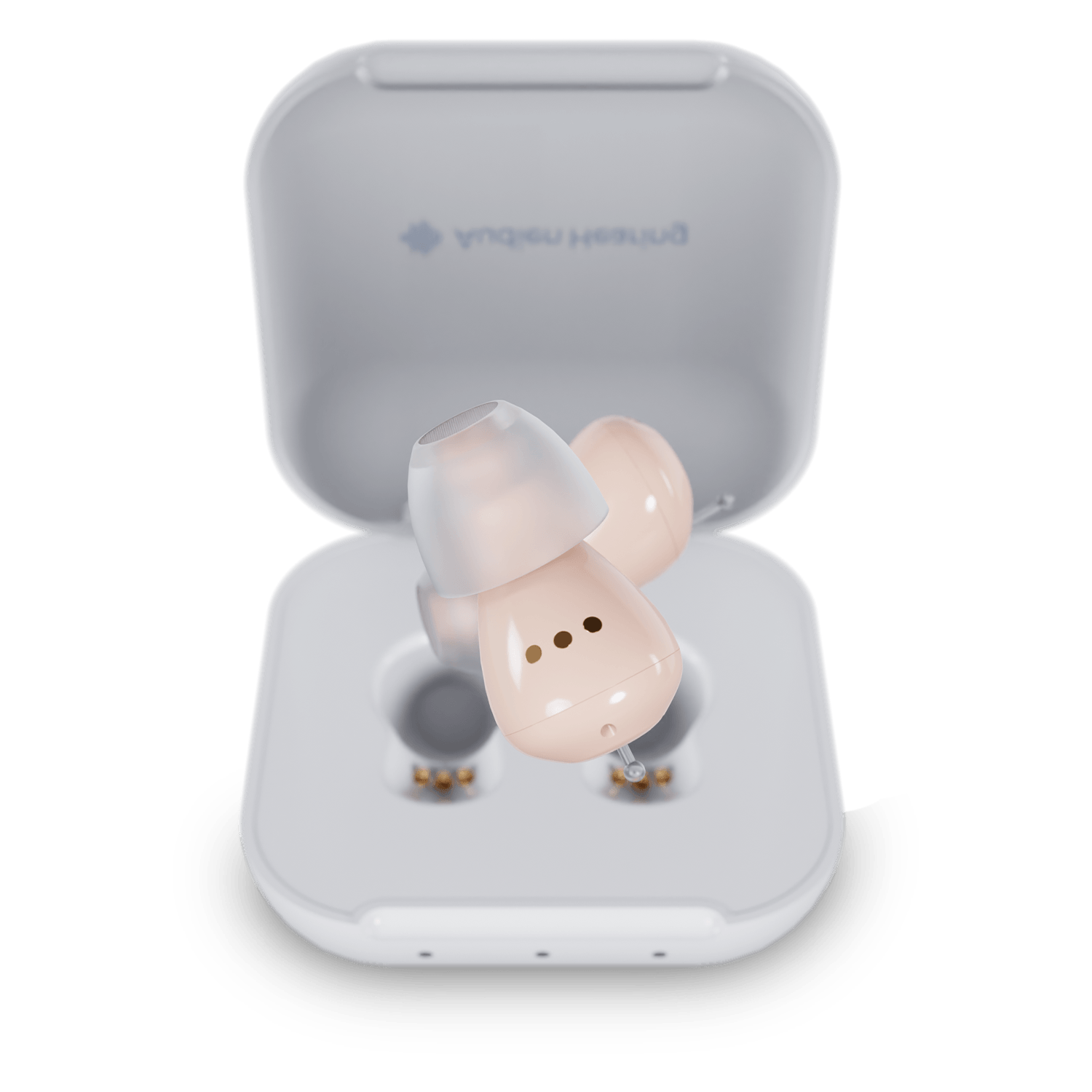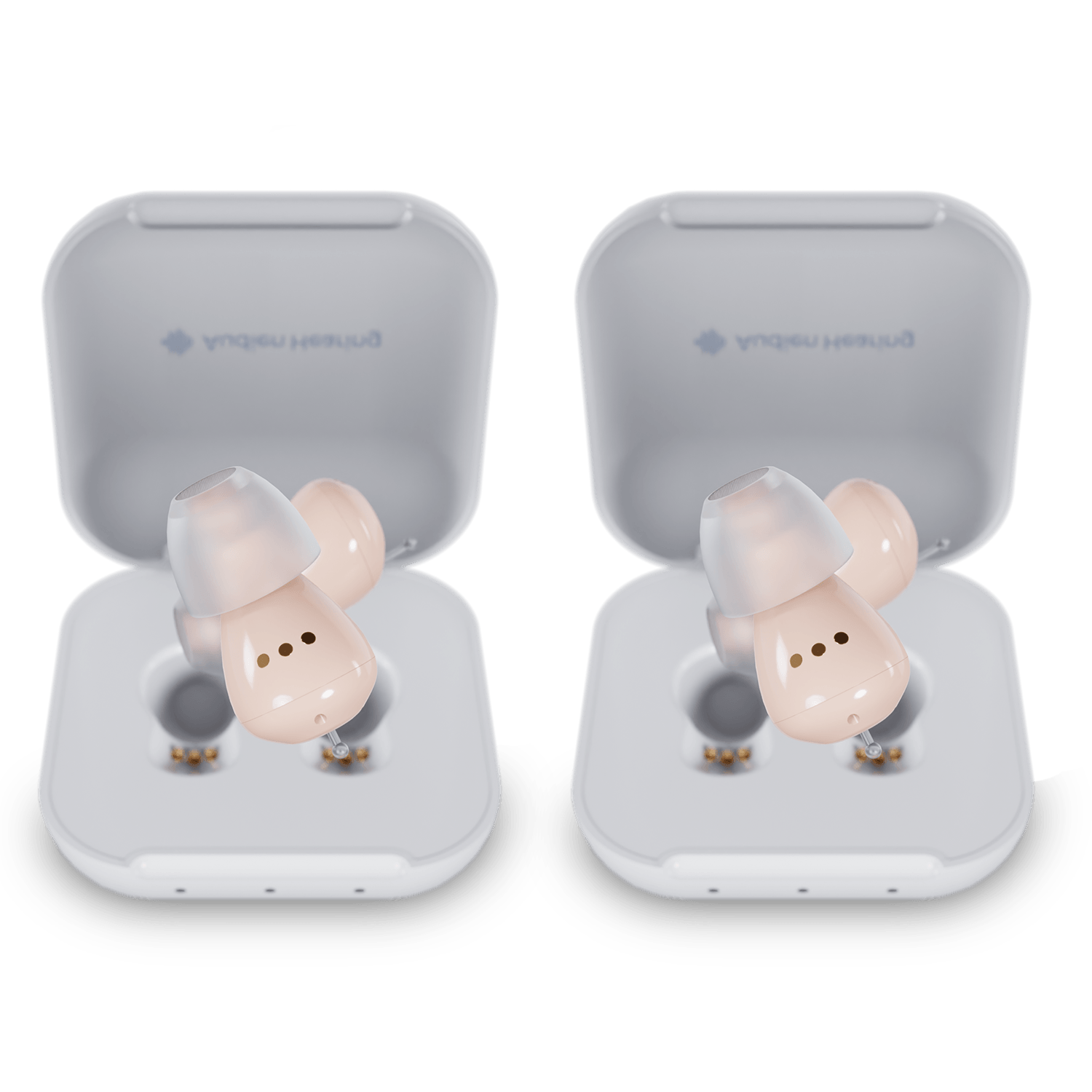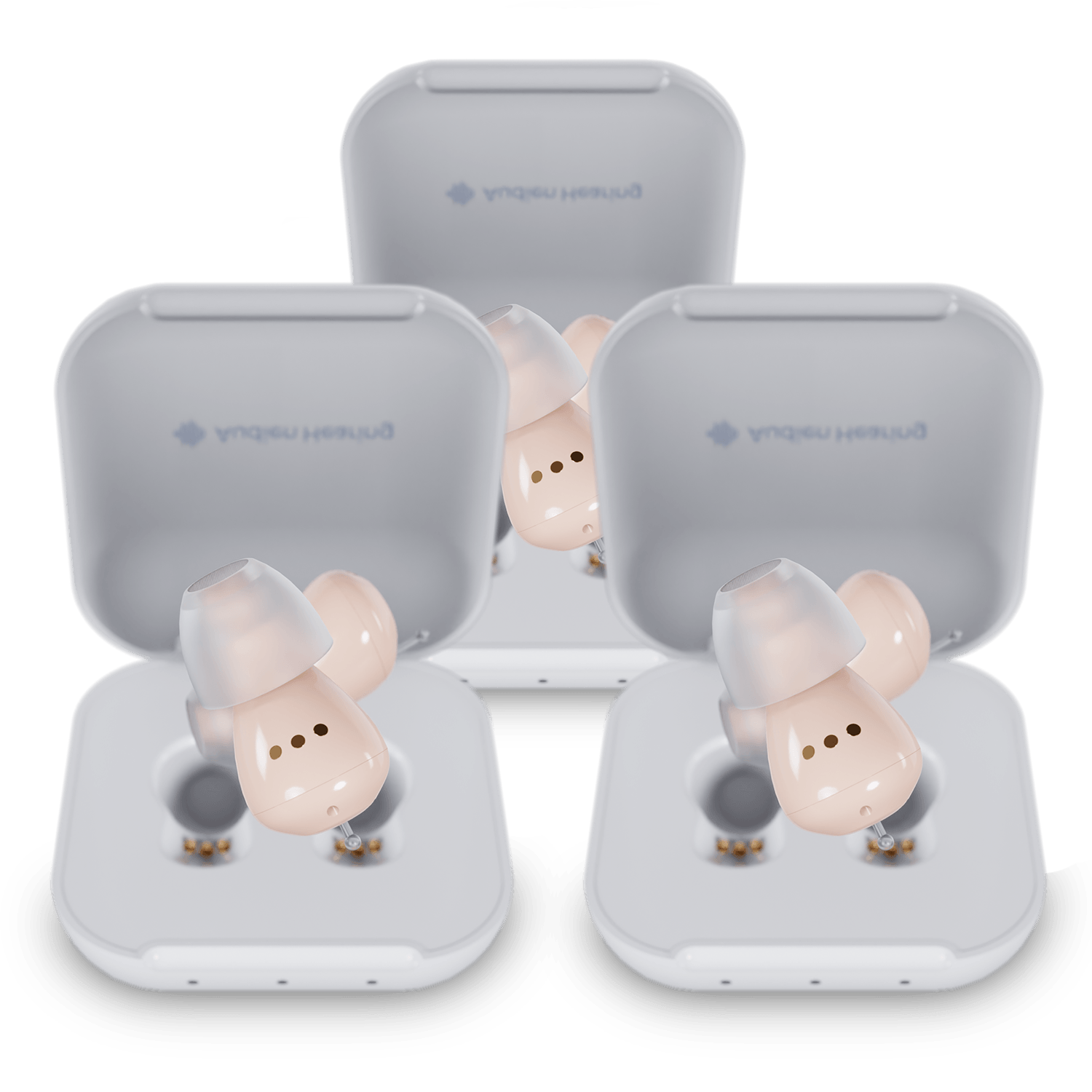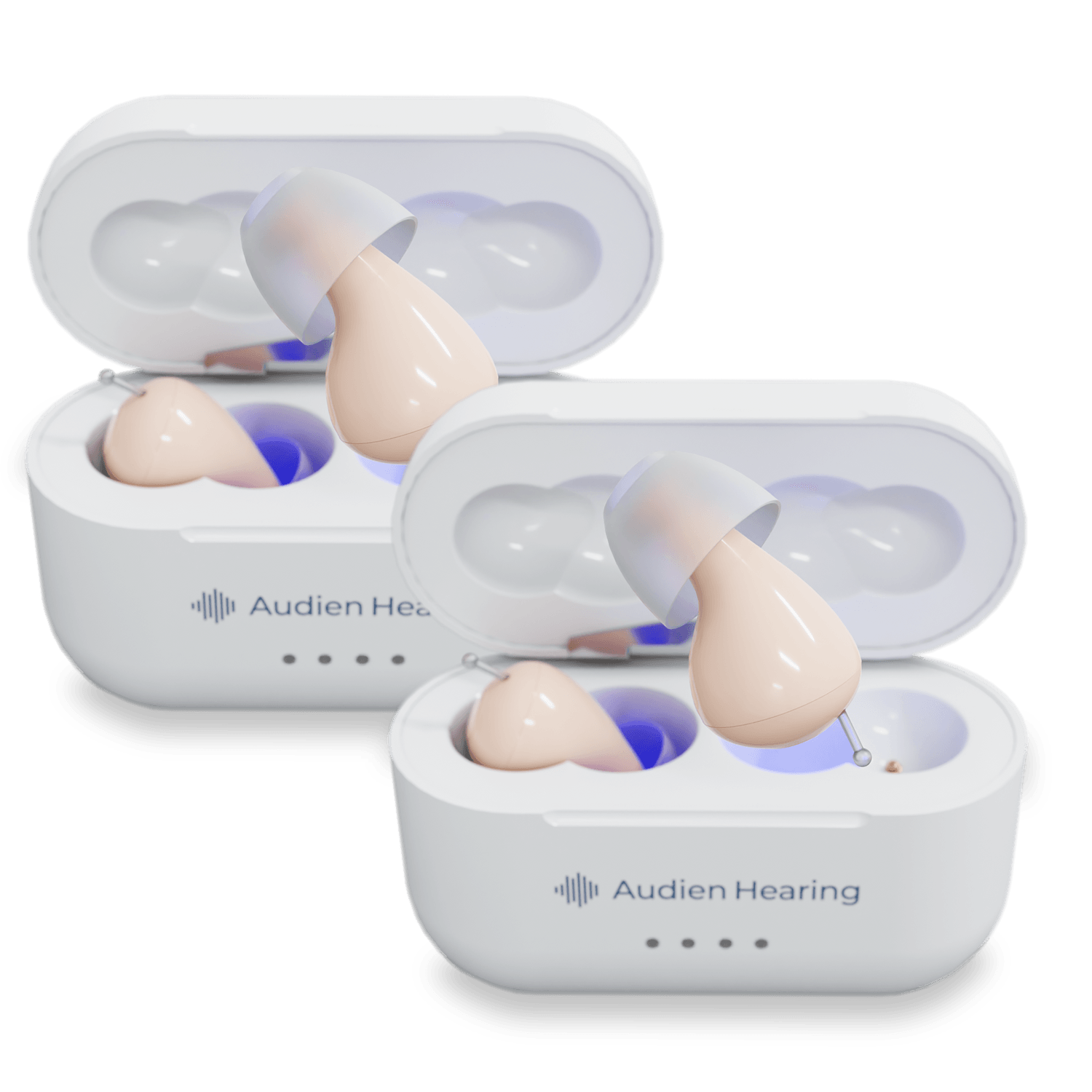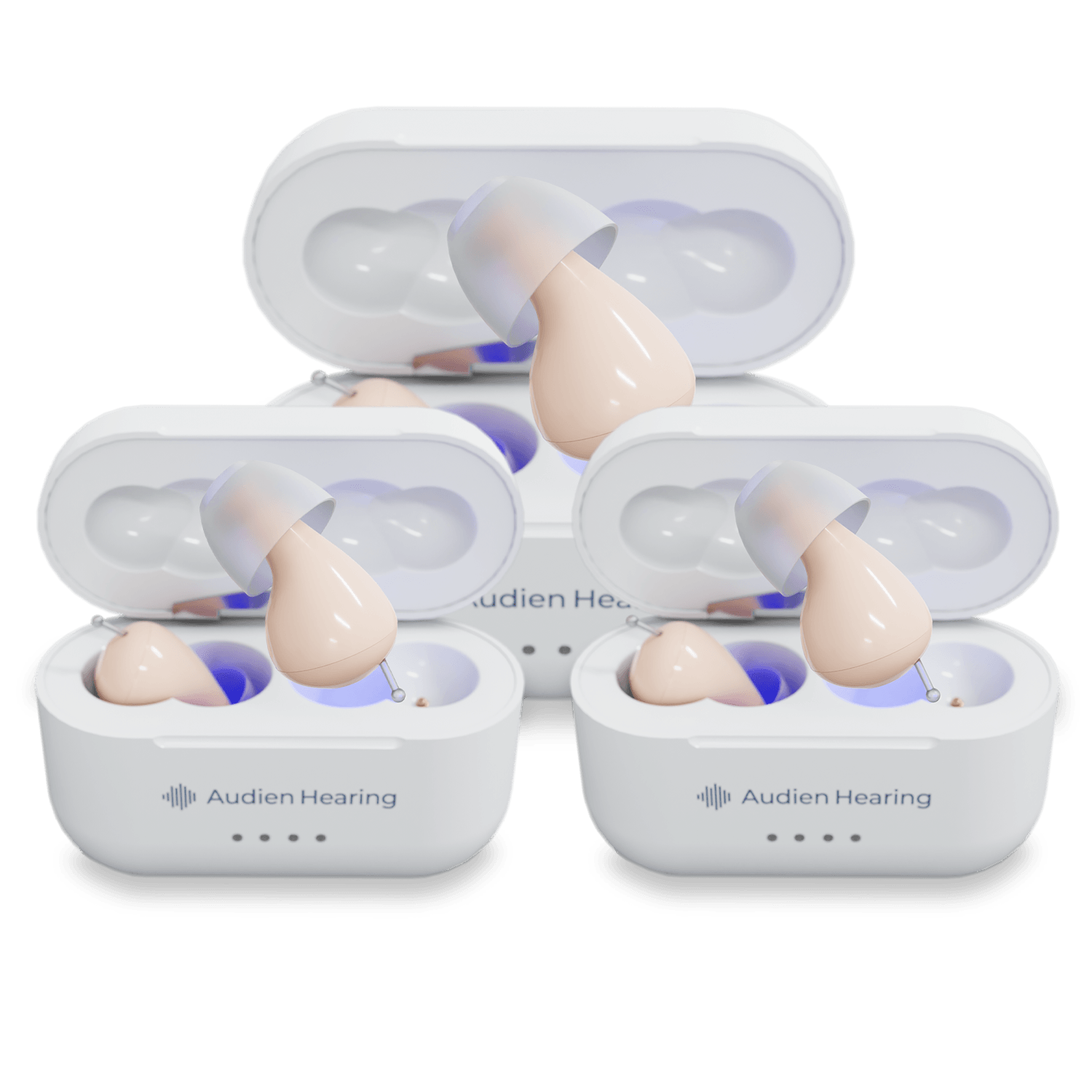Hearing aids are small, medically regulated devices designed to make sounds clearer and easier to understand for people with hearing loss. They contain tiny microphones that pick up sound from the environment, which is then processed and adjusted based on the user's hearing needs before being delivered into the ear through a small speaker.
Hearing aids are available in different styles, models, and sizes—with varying features and price points. The right hearing aid for you will depend on the degree of your hearing loss, your daily listening environments, and your budget.
Types of Hearing Aids

Hearing aids are tiny amplifiers that intensify sounds for people with hearing loss. They have little microphones that collect sound waves. These sounds are then intensified and sent to your ears through small speakers.
Hearing aids vary by style, model, size, special features and price. The right ones depend on how much hearing loss you are experiencing, as well as your needs and budget.
In-the-Ear Hearing Aids
In-the-ear (ITE) hearing aids are worn entirely within the outer portion of the ear and come in a variety of sizes and styles. These devices are often custom-molded to fit the shape of your ear, based on an impression taken by a hearing care professional. Some models come in skin-tone colors to blend discreetly with the ear.
ITE hearing aids vary in size and visibility. The smallest styles—such as completely-in-the-canal (CIC) or invisible-in-the-canal (IIC) models—sit deep in the ear canal and are designed to be as discreet as possible. Due to their compact size, they may have fewer advanced features or shorter battery life.
In-the-canal (ITC) models are slightly larger and may offer longer battery life and additional features like Bluetooth streaming or onboard controls. These can be suitable for a range of hearing needs, depending on the technology and power level.
Low-profile ITE hearing aids fill more of the bowl of the outer ear. While they’re more visible, they’re easier to insert and remove, and they can support a broader range of features, including directional microphones, telecoils, and wireless connectivity. Some low-profile models can accommodate more significant degrees of hearing loss.
Some over-the-counter (OTC) hearing aids mimic the look of ITE devices, but they are not custom-fit and are intended for adults with perceived mild to moderate hearing loss. These may be a good option for those who don’t need or want the complexity of a prescription device.
Behind-the-Ear Hearing Aids
Behind-the-ear (BTE) hearing aids are one of the most common and versatile styles available. The main body of the device rests behind the ear, while a thin tube or wire connects to a small receiver or speaker that sits in the ear canal. A soft rubber dome or custom earmold is used at the tip to hold the device comfortably in place.
BTE models are known for offering excellent sound quality, and many include multiple microphones, directional processing, and advanced features like Bluetooth streaming and feedback suppression. Rechargeable batteries are also widely available in this style, offering added convenience for daily use.
Some BTE hearing aids use custom earmolds that fit securely in the outer portion of the ear canal. These provide a more tailored fit and are often better suited for individuals with moderate to severe hearing loss, or those with specific anatomical or medical considerations.
Thanks to their size and flexibility, BTE hearing aids can accommodate larger batteries and more powerful technology, making them a strong option for a wide range of users—from those with mild hearing loss to those with more complex needs.
The Two Most Affordable Hearing Aids

The best-priced hearing aids available are over-the-counter, in-the-ear devices from Audien.
Audien Atom
The most affordable hearing aid style is usually the in-the-ear style. Audien Atom hearing aids, for example, go for just $99 a pair. This hearing aid was developed as a response to feedback from people using the Audien EV1 and EV3 hearing aids. It is smaller than previous prototypes and has improved battery life.
This device can be wirelessly charged, is designed for comfort, and uses Atom sound technology to deliver crisp, clear sound. Customers have said in feedback that these work just as well as their much more expensive hearing aids. They also mentioned that they were comfortable to wear and use.
Audien Atom Pro
The Audien Atom Pro hearing aid is similar to the Audien Atom but is slightly higher in price. It has been featured in Digital Journal, Business Insider and Fox News. Customers love the long battery life and clear sound. The Atom Pro also comes with a one-year warranty. It is one of the smallest available devices and still one of the most affordable hearing aids.
Factors To Consider When Buying a Hearing Aid

The most important things to think about when choosing a hearing aid include:
- Style and size
- Your lifestyle
- Your budget
- Features
Style and Size
The style and size you buy depend on how discreet you would like your hearing aid to appear. Remember that the smaller and more discreet the device, the fewer features it usually has. A larger style or behind-the-ear hearing aid might be necessary for better volume control or dependable wireless connections.
Lifestyle
What sort of things do you spend your time doing? Do you participate in any sports? Do you live where there is dust or sand in the air? Do you usually stay home, or do you like to travel? Understanding these lifestyle choices helps you choose the best model for your needs.
Budget
You can’t buy what you can’t afford. Thus, you must check your finances and see what you can put toward hearing aids. They can be a significant investment that improves your quality of life. However, models like the Atom and Atom Pro can help you without breaking the bank. Be sure to analyze your options when choosing the best affordable hearing aids.
Features
Hearing aids come with a wide variety of features. Some can connect to wireless devices so you can listen to music, for example. Some devices, like the Atom and Atom Pro, are rechargeable so you don’t have to worry about trying to change tiny batteries. A number of models have buttons or a wheel on the outside to adjust volume, while others have directional microphones to capture sound better. What you need depends entirely on the lifestyle you lead, the occasions when you need hearing assistance, your level of dexterity and your budget.
Over-the-counter hearing aids may be appropriate if you aren’t experiencing severe hearing loss. Custom hearing aids tend to be programmed specifically for each wearer's individual needs. This is one factor that makes them expensive. However, less costly hearing aids may work well for hearing issues that are not as acute. They aren’t specifically programmed for you, but you shouldn’t pay for that feature if you don’t need it.
Purchasing the Best Affordable Hearing Aids
The most affordable hearing aids you can buy are styles that fit inside the ear and don’t require a medical prescription. Great examples are the Audien Atom and Audien Atom Pro. If you are unsure which hearing aid will work best for you or would like assistance finding one that fits your budget, we’d love to help. Contact us via email, phone or chat on our website.
Sources:
https://www.asha.org/public/hearing/degree-of-hearing-loss/
https://audienhearing.com/products/audien-atom-pro-pair
https://audienhearing.zendesk.com/hc/en-us
